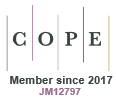WF24182The impacts of fire use in the Brazilian Amazon: a bibliometric analysis
 , Everton Cruz da Silva, Fernando Abreu Oliveira, Karina Dias-Silva, James Ferreira Moura Jr, Thiago Almeida Vieira, Lenize Batista Calvão, Leandro Juen and José Max Barbosa Oliveira-Junior
, Everton Cruz da Silva, Fernando Abreu Oliveira, Karina Dias-Silva, James Ferreira Moura Jr, Thiago Almeida Vieira, Lenize Batista Calvão, Leandro Juen and José Max Barbosa Oliveira-Junior
This study analyzes the impacts of fire use in the Brazilian Amazon based on 192 scientific articles. It underscores the urgency of policies integrating sustainable management and fire governance and highlights the collaboration among academic, governmental and community sectors to protect biodiversity and Amazonian communities.
WF24182 Abstract | WF24182 Full Text | WF24182PDF (2.1 MB) | WF24182Supplementary Material (50 KB) Open Access Article








